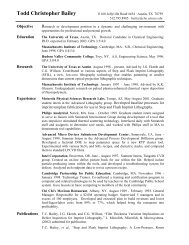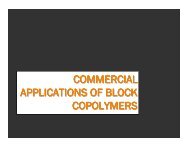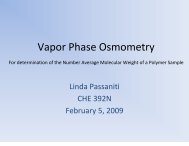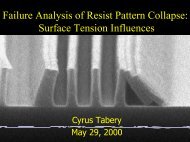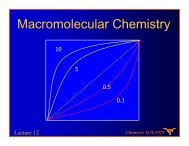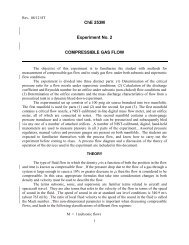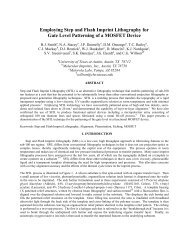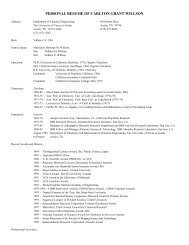Asymmetric fluid-structure dynamics in nanoscale imprint lithography
Asymmetric fluid-structure dynamics in nanoscale imprint lithography
Asymmetric fluid-structure dynamics in nanoscale imprint lithography
- No tags were found...
You also want an ePaper? Increase the reach of your titles
YUMPU automatically turns print PDFs into web optimized ePapers that Google loves.
layer us<strong>in</strong>g a halogen plasma etch. (Step 7) F<strong>in</strong>ally an anisotropic oxygenreactive ion etch is used to transfer a high aspect ratio image to the transfer layer.These high aspect ratio features <strong>in</strong> the transfer layer can then be used as a maskfor transferr<strong>in</strong>g the features <strong>in</strong>to the substrate as <strong>in</strong> traditional <strong>lithography</strong>, i.e.metal deposition, etc.1.3.2 Challenges to Step and Flash Impr<strong>in</strong>t LithographyIn develop<strong>in</strong>g the SFIL process, researchers face a number of importanttechnical challenges. An important aspect of the research is <strong>in</strong> the realm ofmechanical eng<strong>in</strong>eer<strong>in</strong>g, which <strong>in</strong>volves develop<strong>in</strong>g a step and repeat mach<strong>in</strong>e toimplement the process with active control of the orientation stages for parallelalignment of the template with the wafer substrate. This mach<strong>in</strong>e would br<strong>in</strong>g thetemplate <strong>in</strong>to the proximity of the transfer layer through a coarse z-axis actuationstage. Then it would dispense the etch barrier solution <strong>in</strong> the specific patternus<strong>in</strong>g a micro-liter <strong>fluid</strong> dispens<strong>in</strong>g system. Next, it would br<strong>in</strong>g the template <strong>in</strong>tocontact with the transfer layer us<strong>in</strong>g high-resolution actuators. F<strong>in</strong>ally, it wouldillum<strong>in</strong>ate the etch barrier through the backside of the template. A key issue <strong>in</strong>the mach<strong>in</strong>e development is to understand the <strong>in</strong>teraction between the quartztemplate, the th<strong>in</strong>-film etch barrier layer, and the wafer substrate.Once the etch barrier <strong>fluid</strong> fills the gap between the template and thetransfer layer, the template must be pushed towards the wafer <strong>in</strong> order tom<strong>in</strong>imize the thickness of the rema<strong>in</strong><strong>in</strong>g etch barrier base layer. Ideally, the baselayer would be nonexistent <strong>in</strong> the f<strong>in</strong>al impr<strong>in</strong>t process as the etch process that isused to transfer the image to the transfer layer requires m<strong>in</strong>imal or nonexistentresidual base layer. However, this is not practical <strong>in</strong> the actual implementation as11



